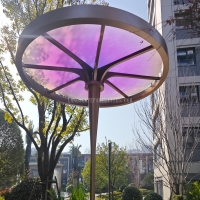Welcome to the website for landscape facilities products and knowledge.
What is the environmental impact of manufacturing and disposing of the bin at end-of-life?
The production and disposal of waste bins have significant environmental consequences, often overlooked in discussions about waste management. Manufacturing plastic or metal bins requires substantial energy and raw materials, contributing to resource depletion and carbon emissions. For example, plastic bins rely on petroleum-based materials, while metal bins involve energy-intensive mining and processing.
At the end of their lifecycle, improperly discarded bins often end up in landfills, where plastic variants can take centuries to decompose, leaching harmful chemicals into soil and water. Metal bins, though recyclable, may still contribute to pollution if not processed correctly. Incineration of waste bins releases toxic fumes and greenhouse gases, exacerbating air quality issues.
Sustainable alternatives, such as biodegradable or recycled-material bins, can mitigate these impacts. Proper recycling programs and extended producer responsibility (EPR) policies are also crucial in reducing the ecological footprint of waste bins. Consumers and manufacturers alike must prioritize eco-friendly designs and disposal methods to minimize environmental harm.
Related search:

Recommendation
Metal frame with gradient color acrylic combined with high-end shading landscape facilities